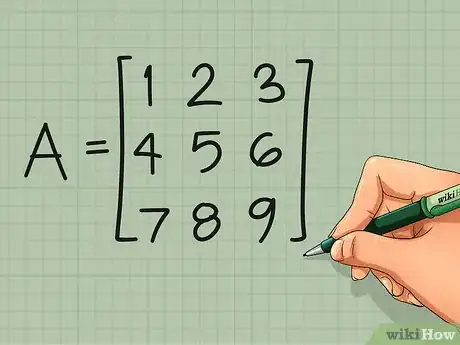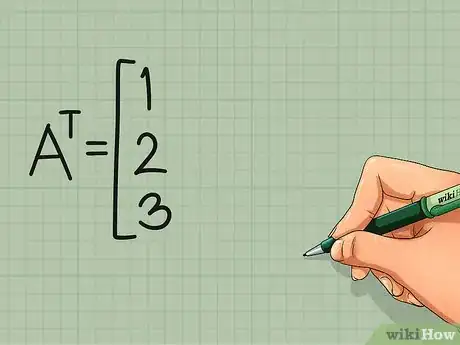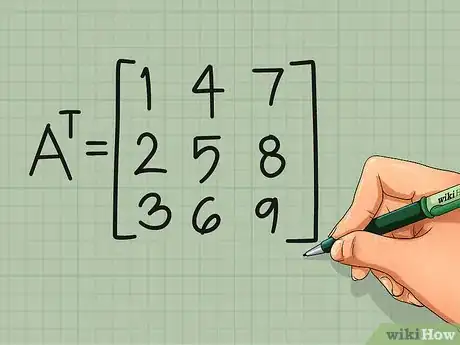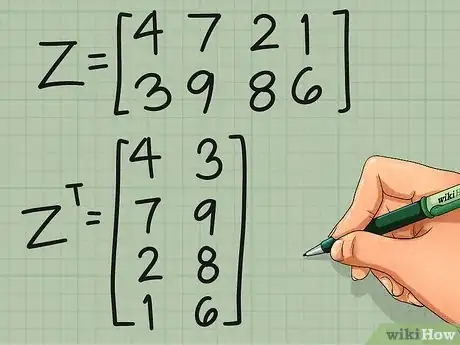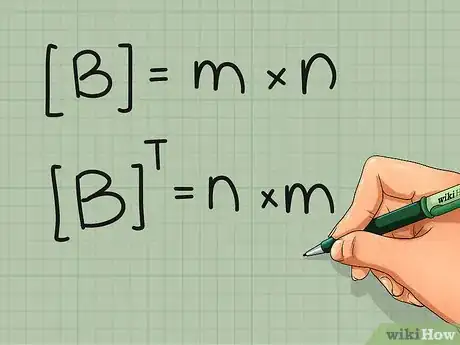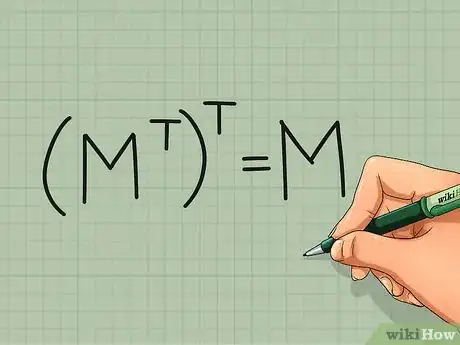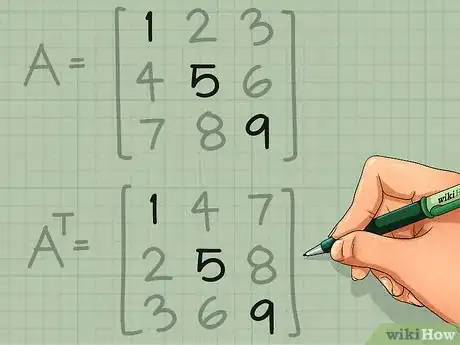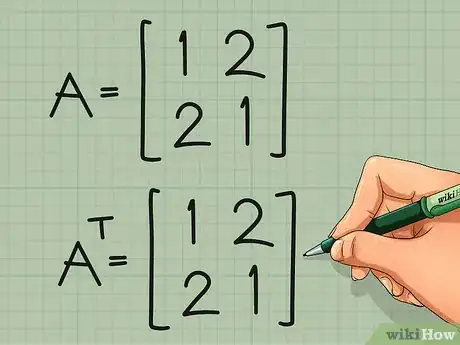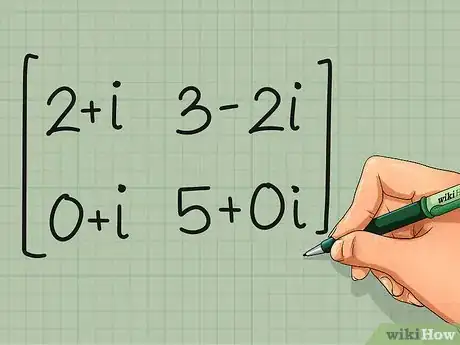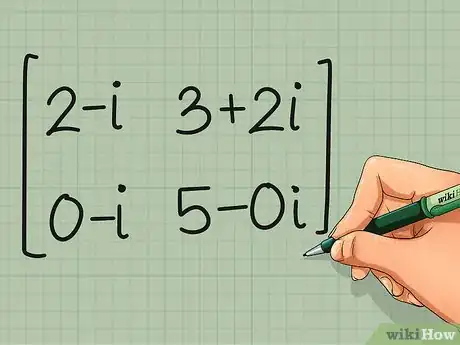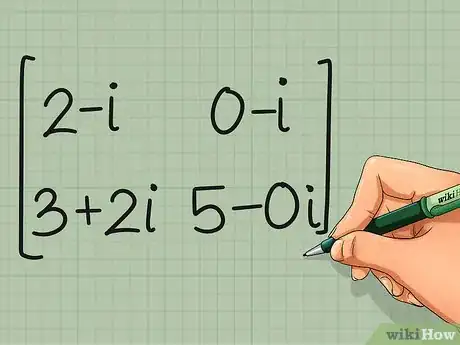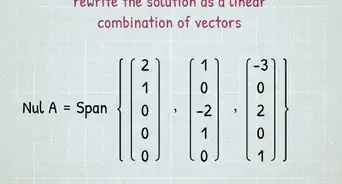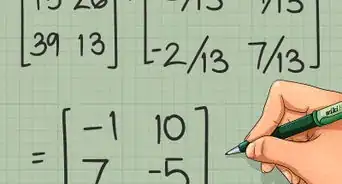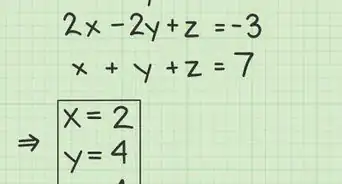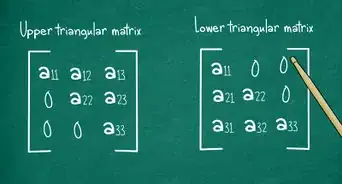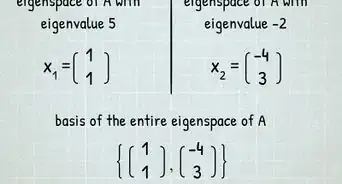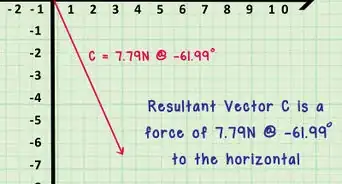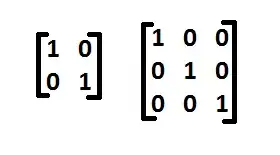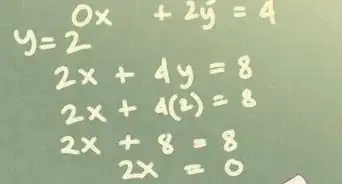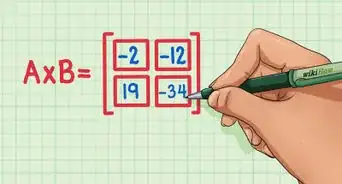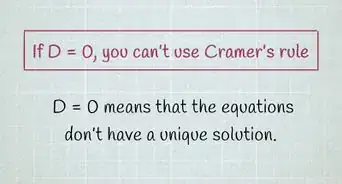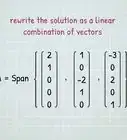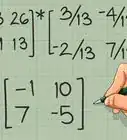wikiHow is a “wiki,” similar to Wikipedia, which means that many of our articles are co-written by multiple authors. To create this article, 9 people, some anonymous, worked to edit and improve it over time.
There are 10 references cited in this article, which can be found at the bottom of the page.
wikiHow marks an article as reader-approved once it receives enough positive feedback. In this case, 81% of readers who voted found the article helpful, earning it our reader-approved status.
This article has been viewed 179,670 times.
Learn more...
Matrix transposes are a neat tool for understanding the structure of matrices. Features you might already know about matrices, such as squareness and symmetry, affect the transposition results in obvious ways. Transposition also serves purposes when expressing vectors as matrices, or taking the products of vectors.[1] If you're dealing with complex matrices, the closely related concept of a conjugate transpose will help you through many problems.
Steps
Transposing a Matrix
-
1Start with any matrix. You can transpose any matrix, regardless of how many rows and columns it has. Square matrices, with an equal number of rows and columns, are most commonly transposed, so we'll use a simple square matrix as an example:[2]
- matrix A =
1 2 3
4 5 6
7 8 9
- matrix A =
-
2Turn the first row of the matrix into the first column of its transpose. Rewrite row one of the matrix as a column:[3]
- transpose of matrix A = AT
- first column of AT:
1
2
3
Advertisement -
3Repeat for the remaining rows. The second row of the original matrix becomes the second column of its transpose. Repeat this pattern until you have turned every row into a column:[4]
-
AT =
1 4 7
2 5 8
3 6 9
-
AT =
-
4Practice on a non-square matrix. The transposition is exactly the same for a non-square matrix. You rewrite the first row as the first column, the second row as the second column, and so forth. Here's an example with color-coding to show you where the elements end up:
- matrix Z =
4 7 2 1
3 9 8 6 - matrix ZT =
4 3
7 9
2 8
1 6
- matrix Z =
-
5Express the transposition mathematically. The concept is pretty simple, but it's good to be able to describe it in mathematics. No jargon is required beyond basic matrix notation:[5]
- If matrix B is an m x n matrix (m rows and n columns), the transposed matrix BT is an n x m matrix (n rows and m columns).[6]
- For each element bxy (xth row, yth column) in B, the matrix BT has an equal element at byx (yth row, xth column).
Special Cases
-
1(MT)T = M. The transpose of a transpose is the original matrix.[7] This is pretty intuitive, since all you're doing is switching the rows and columns. If you switch them again, you're back where you started.
-
2Flip square matrices over the main diagonal. In a square matrix, transposition "flips" the matrix over the main diagonal. In other words, the elements in a diagonal line from element a11 to the bottom right corner will remain the same. Each other elements will move across the diagonal and end up at the same distance from the diagonal, on the opposite side.
- If you can't visualize this, draw a 4x4 matrix on a piece of paper. Now fold is over the main diagonal. See how elements a14 and a41 touch? They trade places in the transpose, as does each other pair that touches when folded.
-
3Transpose a symmetric matrix. A symmetric matrix is symmetric across the main diagonal. If we use the "flip" or "fold" description above, we can immediately see that nothing changes. All the element pairs that trade places were already identical.[8] In fact, this is the standard way to define a symmetric matrix. If matrix A = AT, then matrix A is symmetric.
Conjugate Transpose of a Complex Matrix
-
1Start with a complex matrix. Complex matrices have elements with a real and imaginary component. While you can take an ordinary transpose of these matrices, most practical calculations involve the conjugate transpose instead.[9]
- Matrix C =
2+i 3-2i
0+i 5+0i
- Matrix C =
-
2Take the complex conjugate. The complex conjugate changes the sign of the imaginary components, without altering the real components. Perform this operation for all elements of the matrix.[10]
- complex conjugate of C =
2-i 3+2i
0-i 5-0i
- complex conjugate of C =
-
3Transpose the results. Take an ordinary transposition of the result. The matrix you end up with is the conjugate transpose of the original matrix.[11]
- conjugate transpose of C = CH =
2-i 0-i
3+2i 5-0i
- conjugate transpose of C = CH =
Community Q&A
-
QuestionHow do I identity matrix transpose?
 Robert WilsonCommunity AnswerIn matrix transpose all the rows of a matrix turn into columns and vice-versa. That's how you can identify a matrix transpose.
Robert WilsonCommunity AnswerIn matrix transpose all the rows of a matrix turn into columns and vice-versa. That's how you can identify a matrix transpose. -
QuestionDoes a matrix transpose involve any calculation?
 Community AnswerNo, because to transpose is to rewrite the raw as a column ,starting with the first raw respectively.
Community AnswerNo, because to transpose is to rewrite the raw as a column ,starting with the first raw respectively. -
QuestionGiven that B is a matrix, can B1 be the sign of its transpose?
 Community AnswerSure, that's a good way to remember how the two matrices are related. In general, mathematicians like to use B' or B^T to name the transpose to make it even easier to keep track.
Community AnswerSure, that's a good way to remember how the two matrices are related. In general, mathematicians like to use B' or B^T to name the transpose to make it even easier to keep track.
References
- ↑ https://mathinsight.org/matrix_transpose
- ↑ https://chortle.ccsu.edu/VectorLessons/vmch13/vmch13_14.html
- ↑ https://www.cuemath.com/algebra/transpose-of-a-matrix/
- ↑ https://www.cuemath.com/algebra/transpose-of-a-matrix/
- ↑ https://www.math.tamu.edu/~dallen/m640_03c/lectures/chapter2.pdf
- ↑ http://www.mathcentre.ac.uk/resources/uploaded/sigma-matrices2-2009-1.pdf
- ↑ https://www.khanacademy.org/math/linear-algebra/matrix_transformations/matrix_transpose/v/linear-algebra-transpose-of-a-matrix
- ↑ http://www.mathcentre.ac.uk/resources/uploaded/sigma-matrices2-2009-1.pdf
- ↑ http://mathworld.wolfram.com/ConjugateTranspose.html
About This Article
To transpose a matrix, start by turning the first row of the matrix into the first column of its transpose. Repeat this step for the remaining rows, so the second row of the original matrix becomes the second column of its transpose, and so on. This transposition is the same for a square matrix as it is for a non-square matrix. Finally, express the transposition mathematically, so if matrix B is an m x n matrix, where m are rows and n are columns, the transposed matrix is n x m, with n being rows and m being columns. To learn how to flip square matrices over the main diagonal, keep reading!
